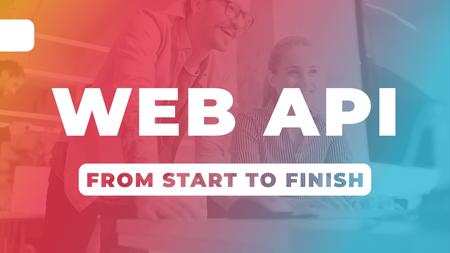English | MP4 | AVC 1920×1080 | AAC 44KHz 2ch | 88 Lessons (17h 59m) | 3.94 GB
Write powerful and reliable APIs
Application Programming Interfaces (APIs) are software that send information back and forth between a program and a user.
The entire web runs on APIs! They are required for microservices, mobile apps, and client-side web apps like Angular, React, or Vue. They also improve the scalability and code reuse of desktop and web apps, yet often developers don’t know how to build resilient, powerful APIs.
This course will teach you how to use authentication, how to protect your API, how to version your API, how to document your API, how to monitor your API, and much more.
Learn all this and more
- OpenAPI
- Tokens and Claims
- Logging
- Rate Limiting
- Minimal APIs
- REST
- HTTP verbs
- Versioning
- Caching
- Calling an API
By the end of this course you will be able to
- Build a robust API
- Secure and monitor an API
- Configure Swagger/OpenAPI fully
- Implement best practices
Table of Contents
1 Introduction
2 Who This Course Is For
3 What This Course Covers
4 What This Course Does Not Cover
5 What Outcomes Should You Expect
6 Introduction
7 What is an API
8 When would we use an API
9 What is REST
10 Where does ASP.NET Core Fit
11 Introduction
12 Creating a New Project
13 Basic Setup
14 Project Cleanup
15 Adding A Controller
16 HTTP Verbs
17 OpenAPI – Swagger
18 Adding API to an Existing Project
19 Introduction
20 Using a Browser
21 Using OpenAPI
22 Using Postman
23 Introduction
24 Storing Secrets
25 Creating Tokens
26 Basic Authentication and Authorization
27 Creating Claims
28 Advanced Authorization
29 Introduction – iamtimcorey
30 Creating a Sample API
31 Configuring Versioning Library
32 Implementing API Versioning
33 Configure Swagger
34 Deprecating a Version
35 Version Neutral Endpoints
36 Introduction
37 Creating Our Sample API
38 Logging
39 Health Checks
40 Real-Time Monitoring
41 Introduction – iamtimcorey
42 Creating a Sample API
43 Data Validation
44 Caching
45 Rate-limiting
46 Introduction
47 Designing the API
48 Creating a Class Library
49 Creating the API Project
50 Adding Basic Security
51 Adding Health Checks
52 Create the Controllers
53 Building the Database
54 Recreating the Database
55 Add Data Access
56 Wire Up the API
57 Adding Logging
58 Testing the API
59 Introduction – iamtimcorey
60 Creating a Blazor Client
61 Wiring Up the HttpClient
62 Creating the Login Page
63 Creating the Display Page
64 Completing Todos
65 Alternative Using OpenAPI Generated Client
66 Introduction
67 Build the Test API
68 Serve Swagger on the Root
69 Support OpenAPI 2
70 Customize Swagger
71 Enable XML Comments
72 Enable Authentication In Swagger
73 Customizing the CSS Theme
74 Introduction
75 Create a Minimal API
76 Add Sample Endpoints
77 Add Real Endpoints
78 Secure the API
79 Introduction – iamtimcorey
80 Consistency
81 Good Naming
82 Secure By Default
83 Use Standard HTTP Status Codes
84 Version Your API
85 Include a Health Check Endpoint
86 Use Pagination
87 Document Endpoints
88 Conclusion
Resolve the captcha to access the links!
